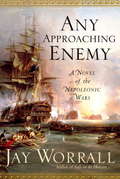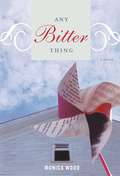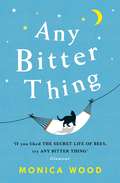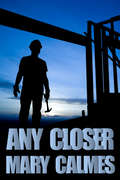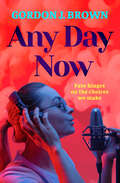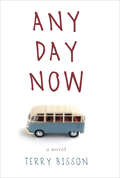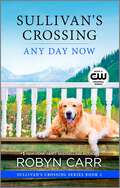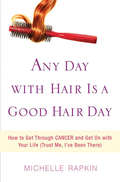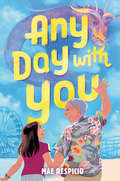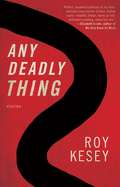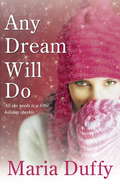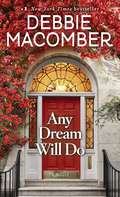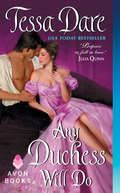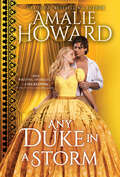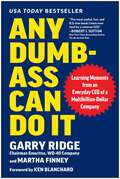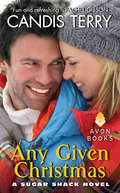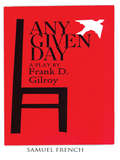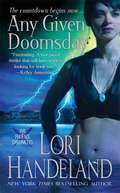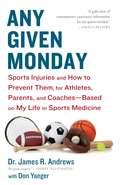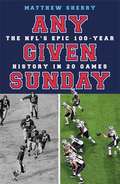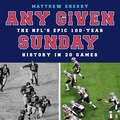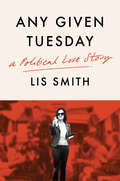- Table View
- List View
Any Approaching Enemy: A Novel of the Napoleonic Wars
by Jay WorrallWith the stunning high-seas adventure Sails on the Horizon, Jay Worrall introduced a bold new hero in the rousing tradition of Jack Aubrey: Charles Edgemont, an ambitious officer in His Britannic Majesty's navy. Raised to the rank of captain for gallantry under fire, Edgemont proved his mettle in the bruising British victory over the Spanish fleet at the Battle of St. Vincent. Now married and in command of the twenty-eight-gun frigate Louisa, the young captain sails toward a day of destiny-for himself and for England. The year is 1798. The war between England and revolutionary France has reached a bloody stalemate, with England in the ascendancy at sea and France unchallenged on the Continent, thanks in large part to an unorthodox twenty-eight-year-old general named Napoleon Bonaparte. But the French, secretly amassing a powerful fleet, mean to break the impasse. When rumors of the French preparations leak, the Admiralty dispatches a squadron of seven ships-among them the Louisa-under the command of Rear Admiral Horatio Nelson to investigate. Blindsided by a storm of ferocious intensity, the ships scatter across the seas. After the storm subsides, the damaged frigates limp back to the rendezvous point. But there is no sign of Nelson's flagship, Vanguard, nor of two other ships of the line. Edgemont fears that the pugnacious rear admiral has pressed on with the mission. Putting his career on the line by disobeying direct orders, Edgemont sets out in pursuit of Nelson and the French fleet on a treacherous voyage along the Tuscan coast. As tensions among the crew threaten to explode into open insubordination or worse, Edgemont makes an unexpected discovery in Naples that may seriously compromise his mission. When the missing French fleet turns up off the shores of Egypt, conveying an army tens of thousands strong, Edgemont is suddenly thrown into a crisis of conscience. As circumstances grow dire and require heroic action, the fate of the crucial battle effectively lies in Edgemont's hands-as does the course of history. From the Hardcover edition.
Any Bitter Thing
by Monica WoodLizzy is 30 years old when she almost dies from getting hit by a car. As she recovers, she revisits her childhood being brought up by a priest falsely accused of molestation.
Any Bitter Thing
by Monica WoodRichard Russo has celebrated Monica Wood's fiction as "thoroughly captivating warm and wise and beautifully written," and Andre Dubus III praised it as "luminous and graceful--entertaining yet transcendent." Any Bitter Thing, Wood's brilliant new novel, is her breakout book, a timely, gripping, and compassionate tale of family, faith, and deeply hidden truths. One of its greatest strengths is its continuous ability to defy expectations. It's not what you think. It is worse. Lizzy Mitchell was raised from the age of two by her uncle, a Catholic priest. When she was nine, he was falsely accused of improprieties with her and dismissed from his church, and she was sent away to boarding school. Now thirty years old and in a failing marriage, she is nearly killed in a traffic accident. What she discovers when she sets out to find the truths surrounding the accidentand about the accusations that led to her uncle's deathdoes more than change her life. With deft insight into the snares of the human heart, Monica Wood has written an intimate and emotionally expansive novel full of understanding and hope.
Any Bitter Thing: An evocative tale of love, loss and understanding
by Monica WoodANY BITTER THING is a novel about how much we can and should forgive, by Monica Wood, the acclaimed author of THE ONE-IN-A-MILLION BOY. The perfect read for fans of Gail Honeyman's ELEANOR OLIPHANT IS COMPLETELY FINE and Joanna Cannon's THREE THINGS ABOUT ELSIE. 'If you liked THE SECRET LIFE OF BEES, try ANY BITTER THING' GlamourAfter surviving a near-fatal accident, thirty-year-old Lizzy Mitchell faces a long road to recovery. She remembers little about the days she spent in and out of consciousness, save for one thing: she saw her beloved deceased uncle, Father Mike, the man who raised her until she was nine, when she was abruptly sent away.Though her troubled marriage and broken body need tending, Lizzy knows she must uncover the details of her accident - and delve into the events of twenty years ago, when whispers and accusations forced a good man to give up the only family he had.What readers are saying about ANY BITTER THING:'Another great story with wonderful characters''This writer, with her exquisite prose, weaves a gripping and grace-filled story of redemption. I will go back to this amazing book again and again. It shines''A beautiful story. The characters take on a life of their own. Pure human emotion, well written, very touching'
Any Closer
by Mary CalmesCharlie Ryder has a colorful past, painful memories, and an embarrassing secret. After three years working for Leo Foster's construction company, Charlie's worst fears are realized, and Leo finds out what Charlie has worked so hard to hide. When Leo meets the revelation with absolute love and acceptance, Leo has to trust that Charlie's love isn't just gratitude, and Charlie has to learn to trust again, period. It's going to take a lot of work for these two men to get any closer.
Any Day Now
by Gordon J. BrownA young woman escapes abandonment, poverty, and crime—but making it in the music world can&’t protect her from her past, in this intoxicating thriller. It&’s 1984 and sixteen-year-old Catherine Day&’s mother has deserted her in their Glasgow home. Alone and desperate for money, Catherine is soon ensnared by local criminals. But that&’s not the life she wants for herself. So she joins a band. Catherine battles hard to succeed—and is aided by a mysterious guardian angel: a man who has connections to her mother and knows things about her family that could change her life forever. But as her star gradually begins to rise and her world feels more secure, a horrifying event reveals she can&’t escape her origins that easily, and what matters most is survival.
Any Day Now: A Novel
by Terry Bisson“An unsettling, funny, freaky reimagining of America, impeccably written, by one of our most . . . interesting transgressors of literary boundaries.” —Michael Chabon, Pulitzer prize-winning author of The Amazing Adventures of Kavalier and ClayWritten in a voice that is warmhearted and hauntingly original, Any Day Now is the story of Clay, a small-town boy searching for his place in the new America—and hoping desperately to forget what happened back East with the girl he loved.This poignant excursion into the last days of the Beats and the emerging radicalized culture of the sixties from Kentucky to New York City is a road movie of a novel. Beginning as a fifties coming-of-age story and ending in an isolated hippy commune under threat of revolution, Any Day Now provides a transcendent commentary on America, and the perils of growing up, then and now.“He writes like a man who invented language . . . Treat yourself to this book.” —Peter Coyote, author of Sleeping Where I Fall“Bisson just wrote his personal masterpiece, a book which will drop you through the floor of your assumptions about coming of age inside the politics and counterculture of the Vietnam era and into a fresh new-old world.” —Jonathan Lethem, National Book Award winning and New York Times–bestselling author of Fortress of Solitude“Highly recommended for its literary quality and creativity of vision.” —Library Journal“[An] unsettling but always interesting alternate-history novel, which offers much subversive commentary on contemporary society [with] jazz-like prose.” —Booklist“The story has a thrumming momentum, a sense of slangy sass and jive, light-hearted yet soulful.” —The Washington Post“Thoroughly enthralling . . . a truly unique reading experience.” —San Francisco Book Review
Any Day Now: A Novel (Sullivan's Crossing #2)
by Robyn CarrFrom the Bestselling Author of the hit Netflix series, Virgin River!For Sierra Jones, Sullivan's Crossing is meant to be a brief stopover. She's put her troubled past behind her but the path forward isn't yet clear. A visit with her big brother Cal and his new bride, Maggie, seems to be the best option to help her get back on her feet. Not wanting to burden or depend on anyone, Sierra is surprised to find the Crossing offers so much more than a place to rest her head. Cal and Maggie welcome her into their busy lives and she quickly finds herself bonding with Sully, the quirky campground owner who is the father figure she's always wanted. But when her past catches up with her, it's a special man and an adorable puppy who give her the strength to face the truth and fight for a brighter future. In Sullivan's Crossing Sierra learns to cherish the family you are given and the family you choose.
Any Day with Hair Is a Good Hair Day: How to Get Through CANCER and Get On with Your Life (Trust Me, I've Been There)
by Michelle RapkinCancer survivor Michelle Rapkin shares her hard-earned wisdom and encouragement to those battling the disease, and vital information that your doctor doesn't know to tell you.
Any Day with You
by Mae RespicioA warm, tender story about a creative girl who hopes that by winning a filmmaking contest, she'll convince her great-grandfather not to move back home to the Philippines. For fans of Erin Entrada Kelly and Kelly Yang. <p><p> Kaia and her family live near the beach in California, where the fun of moviemaking is all around them. Kaia loves playing with makeup and creating special effects, turning her friends into merfolk and other magical creatures. This summer, Kaia and her friends are part of a creative arts camp, where they're working on a short movie to enter in a contest. The movie is inspired by the Filipino folktales that her beloved Tatang, her great-grandfather, tells. Tatang lives with her family and is like the sparkle of her special-effects makeup. When Tatang decides that it is time to return to his homeland in the Philippines, Kaia will do anything to convince him not to go.
Any Deadly Thing
by Roy KeseyFollowing the critical success of his debut collection, All Over, and of his debut novel, Pacazo, Roy Kesey now brings us a new gathering of short stories, Any Deadly Thing. These stories first appeared in magazines including McSweeney's, Subtropics, Ninth Letter and American Short Fiction, and have been widely anthologized; among them are winners of a Pushcart Prize special mention, an Honorable Mention in The Year's Best Fantasy and Horror, and The Missouri Review's Jeffrey E. Smith Editors' Prize in Fiction. With story locales ranging across the Americas to Europe and Asia, Kesey once again makes the full strange world his stage. "Perfect, masterful portraits of an international cross-section of wise, broken souls--hopeful, brutal, funny as hell, and heart-crushing, every last one." -Elizabeth Crane, author of We Only Know So Much "Roy Kesey is one of my favorite contemporary writers, and Any Deadly Thing is another triumph. These stories, reminiscent of William Gass in the remarkable way they combine a virtuoso playfulness and wit with an atmosphere of grimness and grief and heartbreak, range the world over for their brilliantly realized locales, but they share a deeper setting in what Gass calls 'the only holiness we have,' human consciousness. Kesey demonstrates once again that he is a spectacularly deft and empathetic priest of that creed, which is the only one for me." -Michael Griffith, author of Trophy
Any Dream Will Do
by Maria Duffy'Tis the season to be jolly, except for single Dubliner Jenny Breslin ...Everything about her life - her boring job at the bank, the complete lack of romance - has been untouched by holiday magic, and she dreads the thought of spending yet another festive season with her larger-than-life mother and her mother's new boyfriend.Thank God for Twitter, a place where there are always people ready and waiting to have a chat. She's even managed to make a couple of genuine friends there, even though she's never met them IRL.'So who's on for a few days in Dublin? Would love to meet you all in person. I have a spare room in my house'- this drunken tweet to her Twitter pals changes Jenny's life forever. Before she knows it, she's counting down to a Christmas visit from London-native Zahra Burns, make-up artist to the stars; Fiona Lee, a stay-at-home mum from Galway, and nurse Kerry (the Twitter buddy Jenny feels closest to).Suddenly, Jenny becomes aware of how her life will appear to these strangers. In a word: Boring. It's easy enough to pretend that you're an exciting and sophisticated person when nobody can see you, but now Jenny's worried about being caught out in the occasional lies that she's told. All the more incentive to change her life for the better! But once her pals arrive, Jenny finds herself pining for the past and wondering if people are ever who they claim to be.
Any Dream Will Do
by Maria Duffy'Tis the season to be jolly, except for single Dubliner Jenny Breslin ...Everything about her life - her boring job at the bank, the complete lack of romance - has been untouched by holiday magic, and she dreads the thought of spending yet another festive season with her larger-than-life mother and her mother's new boyfriend.Thank God for Twitter, a place where there are always people ready and waiting to have a chat. She's even managed to make a couple of genuine friends there, even though she's never met them IRL.'So who's on for a few days in Dublin? Would love to meet you all in person. I have a spare room in my house'- this drunken tweet to her Twitter pals changes Jenny's life forever. Before she knows it, she's counting down to a Christmas visit from London-native Zahra Burns, make-up artist to the stars; Fiona Lee, a stay-at-home mum from Galway, and nurse Kerry (the Twitter buddy Jenny feels closest to).Suddenly, Jenny becomes aware of how her life will appear to these strangers. In a word: Boring. It's easy enough to pretend that you're an exciting and sophisticated person when nobody can see you, but now Jenny's worried about being caught out in the occasional lies that she's told. All the more incentive to change her life for the better! But once her pals arrive, Jenny finds herself pining for the past and wondering if people are ever who they claim to be.
Any Dream Will Do: A Novel
by Debbie Macomber<P>Beloved bestselling author Debbie Macomber returns with a powerful standalone novel about a woman forced to start her life anew, embarking on the most courageous journey of all—to a place where she learns what love and trust really mean. <p>Shay Benson adored her younger brother, Caden, and that got her into trouble. When he owed money, Shay realized she would do anything to help him avoid the men who were threatening him, and she crossed lines she never should have crossed. <P>Now, determined to start fresh, she finds herself in search of a place to stay and wanders into a church to escape from the cold. Pastor Drew Douglas adored his wife. But when he lost her, it was all he could do to focus on his two beautiful kids, and his flock came in a distant third. <P>Now, as he too is thinking about a fresh start, he walks through his sanctuary and finds Shay sitting in a pew. The pair strike up a friendship—Drew helps Shay get back on her feet, and she reignites his sense of purpose—that, over time, turns into something deeper, something soulful, spiritual, and possibly romantic. Even Drew’s two children are taken with this woman who has brought light back into their lives. <P>Perhaps most important, Shay learns to trust again as she, in turn, proves herself trustworthy to her adopted community. <P>But Caden’s return to town and a disastrous secret threaten to undo the life Shay has tried so hard to rebuild. It will take the utmost courage and faith if she and Drew hope to find healing and open their hearts to a brighter future.</p> <P><b>A New York Times Bestseller</b>
Any Duchess Will Do
by Tessa DareWhats a duke to do, when the girl whos perfectly wrong becomes the woman he cant live without?Griffin York, the Duke of Halford, has no desire to wed this season--or any season--but his diabolical mother abducts him to "Spinster Cove" and insists he select a bride from the ladies in residence. Griff decides to teach her a lesson that will end the marriage debate forever. He chooses the serving girl. Overworked and struggling, Pauline Simms doesnt dream about dukes. All she wants is to hang up her barmaid apron and open a bookshop. That dream becomes a possibility when an arrogant, sinfully attractive duke offers her a small fortune for a weeks employment. Her duties are simple: submit to his mothers "duchess training. . ". and fail miserably. But in London, Pauline isnt a miserable failure. Shes a brave, quick-witted, beguiling failure--a woman who ignites Griffs desire and soothes the darkness in his soul. Keeping Pauline by his side wont be easy. Even if Society could accept a serving girl duchess--can a roguish duke convince a serving girl to trust him with her heart?
Any Duke in a Storm (Daring Dukes #4)
by Amalie HowardHistorical romance takes to the high seas. Famed spy Lady Lisbeth Medford is on a ship bound for the West Indies, and the only thing more dangerous than her mission is the elusive Duke she's trying to capture.Lady Lisbeth Medford, Countess of Waterstone and famed international spy, is caught between the devil and the deep blue sea. She's determined to infiltrate a notorious smuggling ring in the West Indies while on a covert mission as a ship's captain. But even when her identity is compromised and she's forced to flee, the men chasing her are still hot on her heels.The trouble in front of her, however, might be even worse. Raphael Saint, the Duc de Viel, is her ship's new aggravating and dangerously charming sailing master, who might very well be part of the smuggling ring Lisbeth must bring to justice. But when a new deadly threat on the high seas looms, the only way out of danger is to face it…together.Praise for Amalie Howard:"Amalie Howard is the fresh voice historical romance needs right now. …Her prose is delightful, her writing masterful, her characters unforgettable... I will read every word she writes."—Kerrigan Byrne, USA Today bestselling author, for The Princess Stakes"Fiery chemistry...[with] fun action scenes of both the perilous and sexual varieties."—Kirkus Reviews for The Duke in Question"An adventurous romance...readers will not be disappointed."—Publishers Weekly for Rules for Heiresses
Any Dumb-Ass Can Do It: Learning Moments from an Everyday CEO of a Multi-Billion-Dollar Company
by Garry Ridge Martha I. FinneyImagine a successful company culture where people joyfully do meaningful work they believe in, alongside supportive, positive, enthusiastic colleagues. From the former CEO of WD-40 Company, this guide will show you how to make this vision a reality—and how to become a true leader along the way.In Any Dumb-Ass Can Do It, Chairman Emeritus Garry Ridge tells the story of how he helped grow WD-40 Company into one of the world&’s most recognized and beloved brands. How did he do it? By following the wisdom of Aristotle: &“Pleasure in the job puts perfection in the work.&” In his trademark Aussie storytelling fashion, Garry shares experiences from his life that combine to create a deep well of leadership wisdom. You&’ll discover: How one letter from a devoted father inspired Garry&’s thinking around the legacy of positive, lasting memories How to transform any workplace into a community where everyone thrives in psychological safety The importance of never getting too impressed with yourself The number one responsibility of every leader, regardless of position What he learned when he thought he was smarter than a hotel fire alarm on a cold, rainy London night Garry&’s takeaway from the time he rode a horse to Wall Street, dressed in full knight&’s armor What makes a soul-sucking CEO (and how not to be one) Any Dumb-Ass Can Do It is the story of Garry&’s grand adventure in his own words, broken down into learning moments—those flashes of insight that have made all the difference in the world.
Any Given Christmas: A Sugar Shack Novel (Sugar Shack #2)
by Candis TerryDean Silverthorne's mother may be dead, but she still has matchmaking to do. When an injury dashes NFL Quarterback Dean Silverthorne's Super Bowl dreams, he heads back to Deer Lick, Montana with a chip on his wounded shoulder, more determined than ever to get back in the game. He loves his kooky family, but this trip home is going to be a very brief Christmas visit. His game plan doesn't include an instant attraction to Emma Hart, a feisty kindergarten teacher who seems to be the only person in Deer Lick not interested in the hometown hero. Or his dearly departed mom popping up with mistletoe in hand and meddling on the mind. Now Dean can't help but wonder if there's more to love than life between the goal posts.
Any Given Day
by Frank D. GilroyFull Length Drama / 6m, 3f / Interior / This engrossing drama by the author of The Subject Was Roses covers eighteen months in the life of the Benti family during 1942 and 1943. The household is ruled by Mrs. Benti, a prescient and iron willed widow, and includes her three adult children: Carmen, Nettie (a main character in Roses), and Eddie as well as Carmen's illegitimate son Willis whom the others orbit like the sun. Eighteen year old Willis is mentally impaired and in a wheelchair. He appears both younger and older as he presides in often startling and humorous ways over the conflicting dreams, desires and passions that ebb and flow about him. The family appears to be making noble sacrifices in Willis' behalf, but each is actually using him for selfish ends. / "A drama of soaring beauty and power ... sprinkled with comedy."-Reuters
Any Given Doomsday (Phoenix Chronicles #1)
by Lori HandelandDarkness will summon her Elizabeth Phoenix once used her unique skills as a psychic to help in the Milwaukee Police Department's fight against injustice. But when Liz's foster mother is found viciously murdered--and Liz is discovered unconscious at the scene of the crime--her only memory of what happened comes in the form of terrifying dreams of creatures more horrific than anything Liz has seen in real life. What do these visions mean? And what in the world do they have to do with her former lover, Jimmy Sanducci? To places she's never been before While the police question Jimmy in the murder, he opens Liz's eyes to a supernatural war that has raged since the dawn of time in which innocent people are hunted by malevolent beings disguised as humans. Only a chosen few have the ability to fight their evil, and Jimmy believes Liz is among them. Now, with her senses heightened, new feelings are rising within Liz--ones that re-ignite her dangerous attraction to Jimmy. But Jimmy has a secret that will rock Liz to her core and put the survival of the human race in peril.
Any Given Monday
by Don Yaeger James R AndrewsFrom tennis elbow to severe trauma, Dr. James Andrews has treated countless sports injuries during his unparalleled medical career. An orthopedic surgeon, well known for performing Tommy John surgeries, and a consultant to some of the fiercest teams in college and professional sports, Dr. Andrews is the father of modern sports medicine and one of the most influential figures in the world of athletics. In Any Given Monday, he distills his practical wisdom and professional advice to combat a growing epidemic of injury among sports' most vulnerable population: its young athletes. Every year more than 3.5 million children will require medical treatment for sports-related injuries, the majority of which are avoidable through proper training and awareness. Any Given Monday is Dr. Andrews's sport-by-sport guide to injury prevention and treatment, written specifically for the parents, grandparents, and coaches of young athletes. From identifying eating disorders to preventing career-ending ACL tears and concussions, Any Given Monday is a compendium of practical advice for every major sport, including football, gymnastics, judo, basketball, tennis, baseball, cheerleading, wrestling, and more. This invaluable guide reveals how young athletes can maximize their talent and maintain a lifetime of health both on the field and off.
Any Given Sunday: The NFL's Epic 100-Year History in 20 Games
by Matthew Sherry17th September 2020 will mark the centenary of the National Football League. It will reach that landmark as a behemoth, an all-encompassing conglomerate that is the most lucrative sports league in the world - and also the dominant pop culture entity in the United States. The NFL is also making considerable gains worldwide. The International Series has been heading to London since 2007 with incredible sell-outs at the four games in 2019 at Wembley and the Tottenham Hotspur Stadiums.This may lead some to believe the league has always been a roaring success story. History contradicts that reputation, for the NFL of today is a by-product of the humblest beginnings. It is a rocky road filled with genius detours and wrong turns; with heroes and villains; and, most importantly, with thousands of games. Any Given Sunday will detail some of the biggest of those, beginning with the first contest ever played in 1920 and working through to multiple key fixtures from last season. Each chapter will be complemented by countless interviews with some of the game's true legends, from Hall of Fame players and coaches to owners and executives; first-hand accounts from games, including multiple Super Bowls; and, finally, full access to the Pro Football Hall of Fame and NFL Films' extensive archives, including pieces not available to the public.Any Given Sunday takes readers from the boardrooms to the field, into the locker-room and inside the journeys of legends, providing a full snapshot of the NFL's epic first century.
Any Given Sunday: The NFL's Epic 100-Year History in 20 Games
by Matthew SherryAn authoritative 100-year history of America's National Football League from its founding.The NFL has become the most lucrative sports league in the world, yet it has not always been a roaring success story. It is a rocky road filled with detours and wrong turns; with heroes and villains; and, most importantly, with thousands of games. Any Given Sunday recounts twenty of the biggest of those, starting with the first contest ever played in 1920 and working through to key fixtures in the recent past. Each chapter is complemented by interviews with some of the game's true stars; first-hand accounts from games, including multiple Super Bowls; and, finally, full access to the Pro Football Hall of Fame.Matthew Sherry, founder of Gridiron, the UK's only NFL magazine, takes readers from the boardroom to the field, into the locker-room and inside the journeys of legends, providing a full snapshot of the NFL's epic first century.
Any Given Sunday: The Nfl's Epic 100-year History In 20 Games
by Matthew Sherry17th September 2020 will mark the centenary of the National Football League. It will reach that landmark as a behemoth, an all-encompassing conglomerate that is the most lucrative sports league in the world - and also the dominant pop culture entity in the United States. The NFL is also making considerable gains worldwide. The International Series has been heading to London since 2007 with incredible sell-outs at the four games in 2019 at Wembley and the Tottenham Hotspur Stadiums.
Any Given Tuesday: A Political Love Story
by Lis SmithAn irreverent look behind the scenes of American politics from one of the most sought-after operatives in the Democratic PartyLis Smith isn’t your average political strategist and Any Given Tuesday isn’t your typical political memoir. At once a revealing look at human nature at the highest levels of power and an intimate portrayal of a sometimes rocky personal journey, it breaks all the rules. Smith doesn’t pretend to be perfect—she owns the controversial choices that landed her in the tabloids, as well as the unorthodox ones that have paid off and defined her successful career. Any Given Tuesday follows Smith from her earliest experiences as a college-aged intern to her days as a trusted adviser and confidante to some of the most high-profile politicians in the country—including her star turn as senior adviser on Pete Buttigieg’s 2020 presidential campaign. Animated by Smith’s love for the hand-to-hand combat of politics and sustained by her deeply-held belief that it’s still possible to effect positive change, it’s an odyssey full of highs and lows and larger-than-life characters. Throughout, Smith shows what it’s really like behind the curtain: what happens when the lights go down and the cameras turn off, how it feels to be in the eye of the political media storm, and how the people responsible for heady, life and death decisions are as flawed as the rest of us.While the journey hasn’t always been smooth, Lis Smith has seen and learned a lot—and she shares it all in this eye-opening, entertaining memoir.
